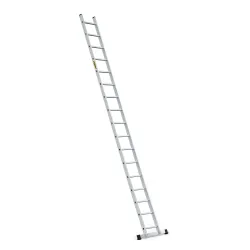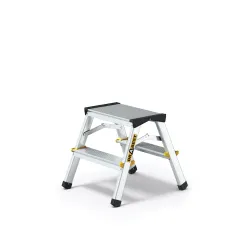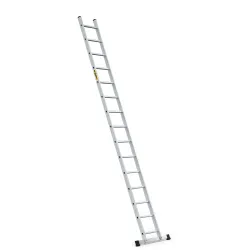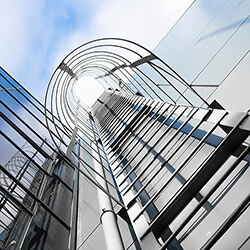- label Poradnik
- favorite 0 polubień

Rusztowanie tradycyjne czy warszawskie? Co wybrać?
Rusztowanie to konstrukcja niezbędna podczas większości prac na wysokościach. Sprawdza się podczas budowy i remontu nieruchomości, wykonywania instalacji czy też montażu elementów wykończeniowych. Wyróżnia się kilka rodzajów rusztowań, przy czym największą popularnością cieszą się rusztowania tradycyjne oraz warszawskie. Dowiedz się, co to jest rusztowanie warszawskie oraz tradycyjne, a także które z nich będzie lepsze w przypadku Twojej inwestycji.
Rusztowanie tradycyjne – co to jest?
Rusztowanie tradycyjne to z kolei konstrukcja tymczasowa, która pozwala na wykonywanie prac na wysokości do 10 metrów nad podłożem. Składa się z pionowych i poziomych słupów nośnych, do których są przymocowane podłoża i żerdzie. Jeszcze do niedawna były one wykonywane z drewna, dziś to częściej modele z aluminium bądź stali.
Wyróżnia się różne rodzaje rusztowań klasycznych. Modele specjalne sprawdzą się świetnie w przypadku trudno dostępnych miejsc, gdzie inne rusztowania tradycyjne nie spełnią w 100% swojej funkcji. Rusztowania modułowe i ramowe łączy się w miejscu, w którym mają być ustawione. Można je wyposażyć w barierki zwiększające bezpieczeństwo. Rusztowania kozłowe są wykonywane z pomostu i podpór. Zwykle są wykorzystywane podczas prac budowlanych na wysokości ponad 2,5 metra.
Rusztowania stojakowe składają się z elementów na specjalnych podporach, usztywnionych za pomocą podłużnic. Utrzymują spory ciężar, dlatego z łatwością można na nich postawić narzędzia i materiały budowlane. Konstrukcje systemowe są bezpieczne i funkcjonalne, jednakże ich montaż zajmuje sporo czasu. Rusztowania jezdne są wyposażone w kółka, a wersje kozłowe to modele składające się z pomostu i podpór, najczęściej wykonanych z grubych desek.
Zarówno rusztowania tradycyjne, jak i warszawskie to praktyczne konstrukcje wykorzystywane na budowach. Inwestorzy mogą wybierać spośród wielu rozwiązań odpowiadających im potrzebom. Zazwyczaj jednak ich wybór pada na rusztowanie warszawskie aluminiowe, charakteryzujące się łatwością przesuwania, lekkością i sprawnym montażem.
Co to rusztowanie warszawskie?
Rusztowanie warszawskie to konstrukcja umożliwiająca przeprowadzenie prac budowlanych, remontowych bądź wykończeniowych na określonej wysokości. To bardzo popularne rozwiązanie wśród inwestorów. Jest oparte na modułowej konstrukcji. Zarówno rama, jak i szkielet rusztowania składają się z metalowych, zespawanych rur.
Rury mają zróżnicowaną średnicą, co pozwala osiągnąć odpowiednią stabilność konstrukcji. Poszczególne moduły w tym rodzaju rusztowania są łączone ze sobą za pomocą złączy czopowych. Montaż konstrukcji jest szybki i łatwy, co wpływa na wydajność prac budowlanych.
Warto mieć na uwadze, że to, czy rusztowanie warszawskie jest dopuszczone do użytkowania, zależy od wydania stosownego pozwolenia. Konstrukcja ta może być bowiem dopuszczona do pracy jedynie po oficjalnym odbiorze przez kierownika budowy albo inną osobę o odpowiednich uprawnieniach, np. w zakresie specjalności konstrukcyjno-budowlanej. Kupując albo wynajmując rusztowanie warszawskie, zwróć też uwagę, czy posiada ono odpowiednie atesty i certyfikaty.
Rusztowanie warszawskie – do jakiej wysokości?
Wysokość aż 8 metrów konstrukcji można osiągnąć, zakotwiczając rusztowanie warszawskie. Do jakiej wysokości sięga ono w przypadku pominięcia tego elementu? Jeśli zdecydujesz się nie wykonywać zakotwiczenia, konstrukcja osiągnie wysokość 5 metrów. Podłoże może być wykonane ze stali albo drewna.
Dlaczego rusztowanie nazywa się warszawskie?
Nazwa ta prawdopodobnie wynika z faktu wynalezienia i stosowania tego typu konstrukcji w Warszawie. Inna nazwa tego modelu to „rusztowanie kolumnowe”.
Rusztowanie warszawskie – kiedy się sprawdzi?
Rusztowanie warszawskie aluminiowe lub stalowe świetnie sprawdzi się w przypadku krótkotrwałych i nieskomplikowanych prac w zakresie remontowania czy modernizacji obiektów. Nadaje się do stosowania zarówno na zewnątrz, jak i w środku budynków. Rusztowanie kolumnowe jest często wykorzystywane np. podczas tynkowania, murowania, spawania albo malowania ścian i elewacji.
Rusztowanie warszawskie – lekkie, stabilne, szybkie w montażu
Duża popularność rusztowania warszawskiego wynika z licznych zalet konstrukcji. Obiekt ten jest lekki, a jednocześnie stabilny i solidny. Jeden segment rusztowania waży około 8-10 kg, co sprawia, że element może przenosić jedna osoba. Aby zamontować poszczególne części konstrukcji, wystarczy młotek – nie ma potrzeby korzystania z dodatkowych narzędzi i akcesoriów. Prostota elementów oraz procesu instalacji powoduje, że trudno tu o błędy montażowe.
Sprawny montaż i demontaż umożliwiają szybkie przetransportowanie rusztowania w inne miejsce, co jest bardzo istotne dla zachowania terminowości prac na budowie. Konstrukcję można łatwo wyposażyć w kółka jezdne. Elementy są krótkie, co sprawia, że przewożenie ich nie wymaga użycia dużego pojazdu. W porównaniu do innych rodzajów rusztowań ich cena jest niska i atrakcyjna.









